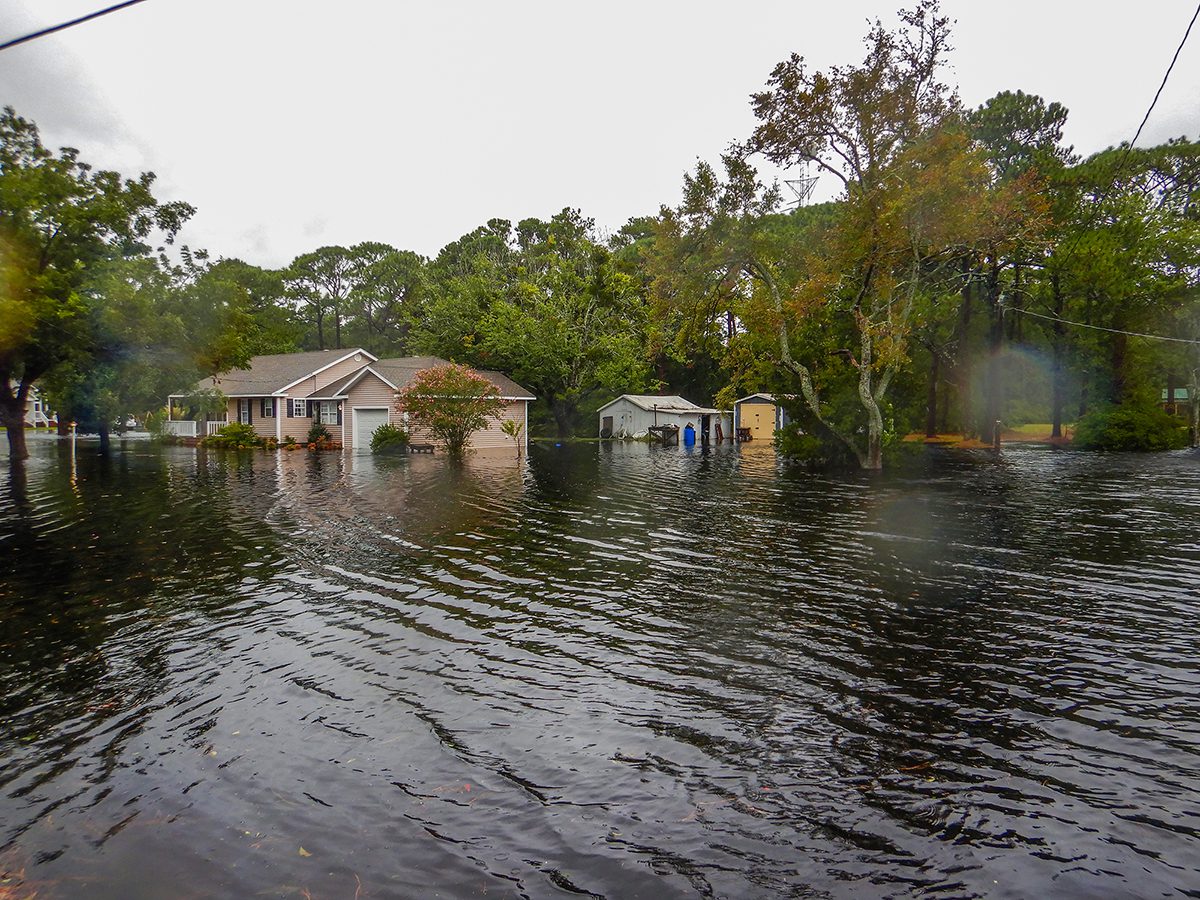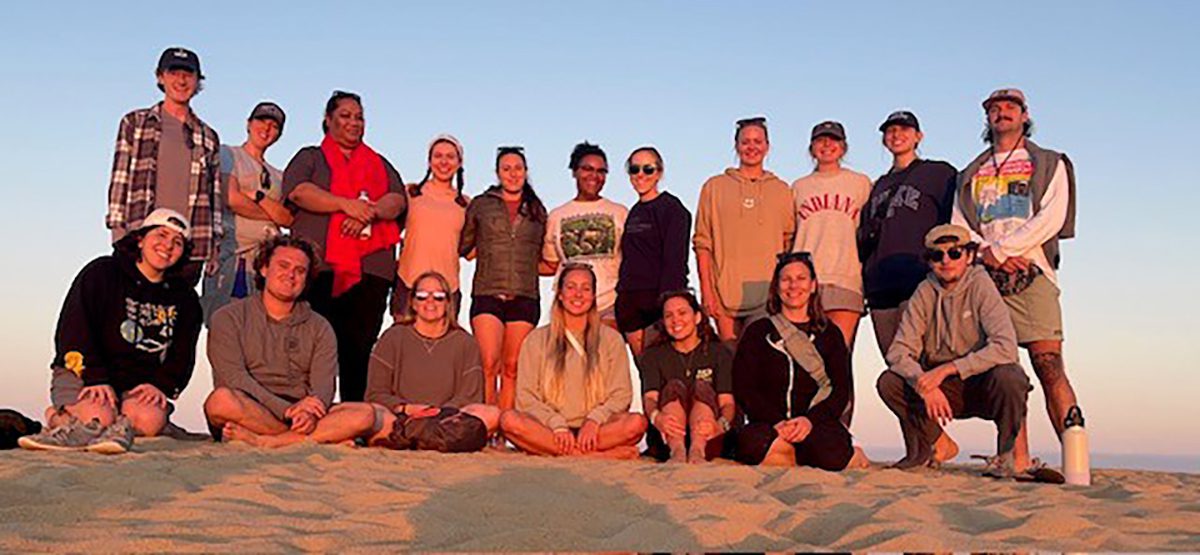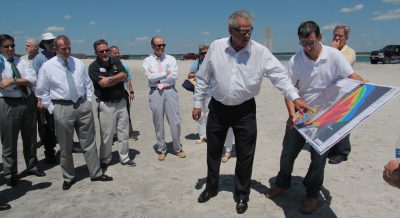
SNEADS FERRY — Capt. Mack Liverman scanned the channel as his grandson Jeffrey Frye steered the Lady Ellen toward the shallow mix of waters ahead.
Bill Davis, another captain along for the ride, coached Frye. The Lady Ellen moved slowly, easing along a precarious route near the mouth of the New River. The old shrimper is fitted with the latest GPS and depth gear, but all eyes in the wheelhouse were searching the ripples in the water for any break ahead.
Sponsor Spotlight
The trip from Millis Seafood, the Sneads Ferry, home for the Lady Ellen, had not been long — out Wheeler Creek and just past Poverty Point. After that there is no marked channel. There hasn’t been since the buoys were pulled earlier this year. Since then, the New River has been effectively closed to navigation. With no workable plan and no money to clear a route, it will likely stay that way until sometime next year.
The crew for trip was not the usual. It included 10 members of the state House Select Committee on Strategic Transportation Planning and Long Term Funding Solutions, along with a handful legislative staffers and local officials.
Their late August trip to the coast was intended to give members a firsthand look at navigation challenges and beach erosion where the New River meets North Topsail.
Liverman and the Lady Ellen, with just a five-foot draft, was enlisted to give the committee a waterside view of the erosion and a firsthand look at the difficulties in keeping the inlet navigable.
Sponsor Spotlight

After the captain judged the chances of grounding as excellent, the tour group came up short of seeing the sandbag walls and threatened houses along the North Topsail shoreline.
The tour guide for the trip was Rep. Phil Shepard, R-Onslow, a co-chair of the committee, who is studying a deal to bring together Onslow County, the town of North Topsail Beach, the Marine Corps and the state into an agreement that will open up river access and use sand from the project to re-nourish North Topsail Beach.
That involves a two-step plan, starting with a short-term solution to use sand from inlet dredging to re-nourish the beach at North Topsail Beach. The long term solution involves building a terminal groin or a jetty. Both steps are expensive propositions and may require changes to existing laws.
At last month’s meeting in Sneads Ferry, North Topsail Beach Manager Stuart Turille told legislators that he is hoping to leverage money from the state’s shallow-draft inlet dredging fund to fight the erosion.
“There is hope. The shallow-draft fund can save the river and allow it to be open again,” he said. “Additionally that sand is a source of sand can be used to protect the shoreline of the town.”
Turille said fighting erosion has left the town strapped for cash. In the past four years, he said, the town of 900 year-round residents has spent more than $20 million on beach and inlet projects with $17 million for its southern beaches, $4 million for an emergency sand bag wall on the troubled north end and $400,000 in matching funds to help clear the ocean bar. The town recently received a warning letter from the state’s Local Government Commission that its fund balance has dipped below safe levels.
Turille told legislators that the projects benefit people from all over the state and the town needs more flexibility and partners to continue funding them. He pointed to the shallow-draft inlet fund, which helped replace the rapid decline of federal dollars.
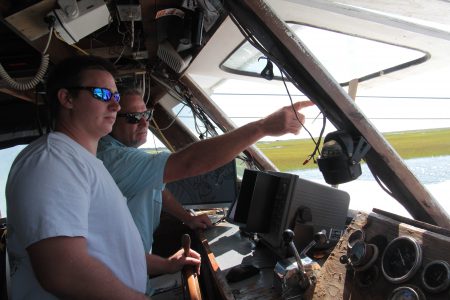
“The shallow-draft fund has saved us,” he said. “We have multiple needs on a barrier island in particular and we can’t do it alone.”
A combined project that would clear a route to the ocean and re-nourish the beach, he said, will be impossible under the current funding rules, which do not permit the town to use a $1 million state grant for beach re-nourishment for the one-third local match for the inlet dredging project.
Without any other partners stepping up to chip in, he said. the town’s share of the roughly $8 million project to open the river would be $2.65 million.
“That’s cost prohibitive,” he said. “The bar will stay closed this year.”
Turille said he hopes an agreement can be reached with other stakeholders to open the river next year.
Representatives of the Marine Corps and Onslow County told legislators they are considering the plan.
Fighting the Tide
The inlet dredging fund’s creator, Sen. Harry Brown, R-Onslow, said he hopes to resolve the immediate issues at New River Inlet soon as well.
While the dredging fund bridged an important funding gap when federal money dried up, Brown said he still believes the long-term answer for New River and other inlets on the North Carolina coast is a terminal groin.
After years of debate, the state legislature in 2011 made an exception to the state’s ban on hard structures along the beach by allowing for four terminal groins at inlets along the coast. Two more were added later, including New River Inlet.
“The groin issue is one I’ve pushed for 12 years and I am absolutely convinced. They been used in other states, they’re successful,” Brown said in a recent interview. “New River inlet is a great example of where a groin could save money long term. It would keep that inlet open and also take care of the north end of the island for North Topsail Beach. You won’t have to dredge as often and you won’t have to nourish as often.”
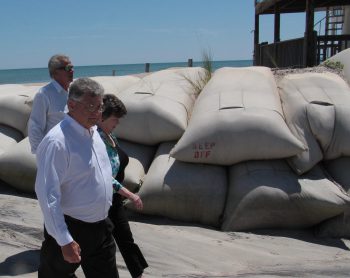
Mike Giles, a coastal advocate for the North Carolina Coastal Federation, said that’s wishful thinking given the nature of the coast and the impact of major storms. A terminal groin, especially in an inlet as active as New River is always a “roll of the dice,” he said. “The engineering models amount to a best guess. No one really knows what will happen.
What is apparent, he said, is that there is considerable pressure on legislators to do something. State law currently prohibits considering navigational improvements in making the case for a groin.
Terminal groins are small jetties that are designed to control erosion, not prevent a channel from meandering in an inlet. Much longer jetties are required for that, and they must be built on both sides of an inlet. Jetties weren’t included in the exception to state law that the legislature made in 2011.
“Terminal groins are intended just to stabilize the inlet shoulder. They were never intended to improve navigation,” Giles said. “This is a case where politics trumps science.”
Given the cost and questionable benefits, Giles said, the town would be better off moving or purchasing the properties.
“It’s unfortunate that some people would lose their second homes or rental properties,” he said. “But the cost in the long run would be a lot cheaper.”
Geoff Gisler, an attorney for the Southern Environmental Law Center, said as more towns along the coast begin to weigh the costs and benefits of terminal groins, they’re starting to question if they are worth it, especially considering unknown effects on properties down the beach.
“These things always have down drift impacts,” he said. “They don’t make sense, they’re not viable, not a good investment.”




